Bat stuff
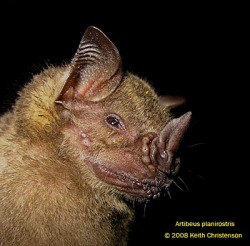
Bats comprise over 20% of the world's mammal species, and are found almost everywhere except Antarctica. And while their basic body design is similar among all species, and nearly unchanged for 50 million years, they have a very diverse set of ecological profiles. One of the simplest methods of separating bats into groups is to go by the primary food source, such as the insect eaters or the fruit eaters. While not all that scientifically accurate, it does allow for a way to think about different bats, and tropicalbats.com uses this artificial method of separation. Photo: Artibeus planirostris from Suriname
Insectivorous bats (bug eaters)
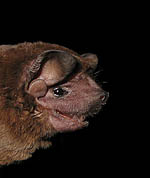
The majority of bat species are insectivorous, and even many of the nectar and fruit bats will eat some insects. These bats dominate the temperate regions, and one species (Eptesicus Nilssonii) is known to breed above the arctic circle in Norway. Many have adapted to the colder areas by using hibernation to pass the winter when food is unavailable. But the tropics have many species of insect-eating bats as well. Photo: Molossus molossus from Suriname
Frugivorous bats (fruit eaters)
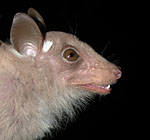
The most famous fruit-eating bats are called, believe it or not, the fruit bats. They are also called the flying foxes, and are scientifically known as the Megachiroptera and are only found in the Old World. Possibly the second most well-known frugivorous bats are the leaf-nosed bats of the New World, which are in the Phyllostomidae family. In general, bats that eat fruits tend to be larger and more robust than insectivorous bats, but there are some quite small ones as well. Photo: Epomophorus crypturus from Zambia
Nectivorous bats (nectar drinkers)
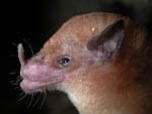
Nectar bats are less well-known, but some of the most important bats ecologically. These bats often have a slightly to greatly elongated nose, and really long tongue, to allow them to drink flower nectar. And while less stable than a hummingbird, they can and do hover. It is their role as pollinators of night-flowering plants that is key, though, and they are primary or obligate pollinators of a wide variety of such plants. Photo: Lonchophylla robusta from Pamana
Sanguivorous bats (blood drinkers)
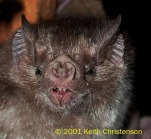
Of the 1,100+ known species of bats, exactly three drink blood for their nutrition. Two of these do not drink the blood of mammals (honestly, birds are easier prey at night), and one, just one, does drink the blood of mammals. Which of course, makes this one species, Desmodus rotundus, possibly the most recognized name among all bats: the vampire bat. At the same time, many do not, in fact, understand the ecology of these bats nor how they can be managed to prevent harmful attacks against people and livestock. Click here to learn more about these animals.